

The exhibition „Irving Penn. Diverse Worlds” presents photographs from several of Irving Penn’s best-known series. Most of them were donated to the Moderna Museet, Sweden in 1995 by the artist in memory of his Swedish-born wife, Lisa Fonssagrives-Penn. The exhibition includes photographs that span a period of more than fifty years, as well as some of his spreads for magazines, primarily the American magazine Vogue.
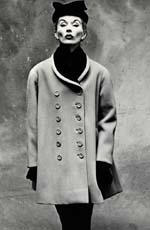
Irving Penn (1917–2009) is considered one of the leading photographers of our time. He worked in advertising and fashion, and was acclaimed in both worlds. In distinct series of portraits, fashion photographs and still lifes, he developed a unique style that is recognizable for its clarity of detail and precision, and for minimalist expression. Penn worked almost exclusively in the studio, primarily in his own in Manhattan, but also in a mobile studio that he put up wherever he happened to be in the world. Irving Penn worked for Vogue almost his entire professional career. The 1943 cover of Vogue was Irving Penn’s first published cover photograph. It is a composition of exclusive fashion accessories and, rather surprisingly, a picture with lemons. His final cover for the magazine being published in May of 2004. Together with Richard Avedon at Harper’s Bazaar, Penn became one of the leading figures of the genre, and central to the development of traditions in the field of fashion photography. One of the things that made fashion photographers so successful was that they were able to publish week after week and be credited by name in widely distributed editorial stories.
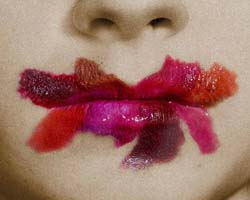 With a degree in art, Penn was quite familiar with both contemporary and historical art. His still lifes allude to the masters of art history, which reflects the particular interest he took in European still lifes of the early 17th and 18th centuries. His oeuvre contains both commercial and artistic work. In the 1970s though he began to focus increasingly on exhibitions and books, and in 1984 the Museum of Modern Art in New York arranged a comprehensive retrospective of his work. The year after, Irving Penn was awarded the international photography prize the Hasselblad Award.
With a degree in art, Penn was quite familiar with both contemporary and historical art. His still lifes allude to the masters of art history, which reflects the particular interest he took in European still lifes of the early 17th and 18th centuries. His oeuvre contains both commercial and artistic work. In the 1970s though he began to focus increasingly on exhibitions and books, and in 1984 the Museum of Modern Art in New York arranged a comprehensive retrospective of his work. The year after, Irving Penn was awarded the international photography prize the Hasselblad Award.

Irving Penn was a frequent traveller. On his many trips to unusual destinations, separated from his permanent studio, Penn and his assistants would build up a mobile studio. Penn’s works from such places as New Guinea, Morocco, and Dahomey (now Benin) have at times been called his “ethnographic series”. Irving Penn’s studio in lower Manhattan remains intact, painted white with grey doors and a well-worn floor. Many of the subjects of these portraits were well-known cultural figures, such as the artist Salvador Dalí, the fashion designer Elsa Schiaparelli and the composer Igor Stravinsky.
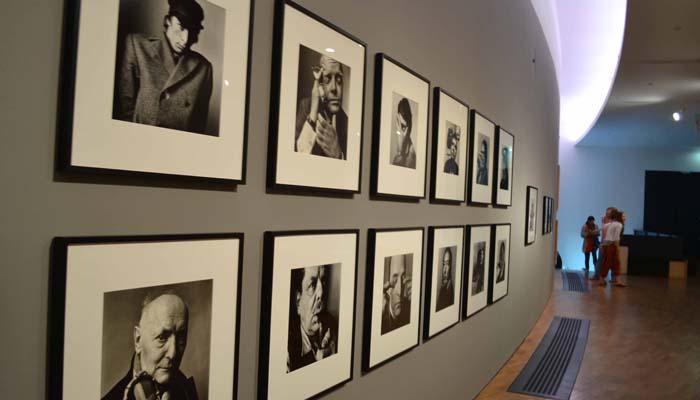
Alongside his fashion photography and portraits of cultural figures, in 1950 Irving Penn began a series of pictures of craftsmen and other workers that he called “Small Trades”. He usually photographed them from the front, standing, clad in work clothes and holding the tools of their trade. These respectful representations of proud workers capture both the individuals and their trades.
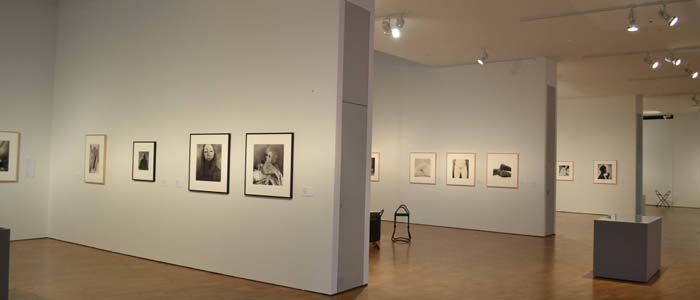
The various seemingly distinct series of photographs that make up Irving Penn’s body of work are tied together by his curiosity and desire to portray his subjects in a particular, fastidious and detailed manner. He did this by photographing everything in the same milieu. The widely varied image worlds we meet here were all literally constructed in the same room – Irving Penn’s studio.
Blogged by Amal Kiran Jana from Milan at 5.30 A.M

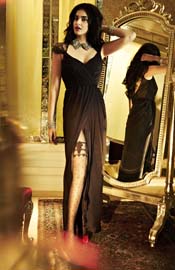 Infusing fantasy and surreal concepts to this season of Lakme Fashion Week, designer Shehla Khan introduces a deeper and bolder hued collection named “Tale of the Unexpected” which draws inspiration from the designer’s love of fairy tales. .
Infusing fantasy and surreal concepts to this season of Lakme Fashion Week, designer Shehla Khan introduces a deeper and bolder hued collection named “Tale of the Unexpected” which draws inspiration from the designer’s love of fairy tales. .

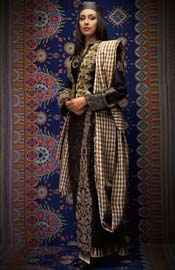 In the celebration of the Indian Textile Day, Ritu Kumar is presenting her textile inspired collection at the LFW Winter/Festive on 26th August 2013 at 9.30 pm.
In the celebration of the Indian Textile Day, Ritu Kumar is presenting her textile inspired collection at the LFW Winter/Festive on 26th August 2013 at 9.30 pm.
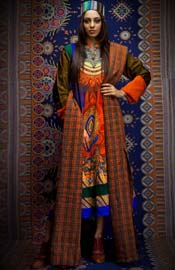 To give a young, contemporary look to the collection, Ritu kumar has combined modern day lycra jersey with leather, wool, tussar silks, hand spun khadi weaves, back strap loomed fabrics plus the woven silks. The garments range from a variety of coats, trousers, leggings, the kira, wrap jackets, dresses, kaftans and capes.
To give a young, contemporary look to the collection, Ritu kumar has combined modern day lycra jersey with leather, wool, tussar silks, hand spun khadi weaves, back strap loomed fabrics plus the woven silks. The garments range from a variety of coats, trousers, leggings, the kira, wrap jackets, dresses, kaftans and capes.
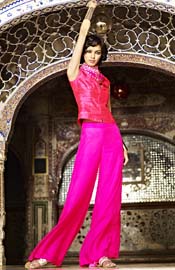 This season, Anita Dongre will present modern and independent woman with many facets and moods; silhouettes and accents have been subtly combined with traditional notes at the upcoming Lakme Fashion Week W/F , on August 23 at 9:30 PM.
This season, Anita Dongre will present modern and independent woman with many facets and moods; silhouettes and accents have been subtly combined with traditional notes at the upcoming Lakme Fashion Week W/F , on August 23 at 9:30 PM.
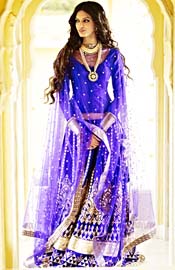


 The exhibition „Irving Penn. Diverse Worlds” presents photographs from several of Irving Penn’s best-known series. Most of them were donated to the Moderna Museet, Sweden in 1995 by the artist in memory of his Swedish-born wife, Lisa Fonssagrives-Penn. The exhibition includes photographs that span a period of more than fifty years, as well as some of his spreads for magazines, primarily the American magazine Vogue.
The exhibition „Irving Penn. Diverse Worlds” presents photographs from several of Irving Penn’s best-known series. Most of them were donated to the Moderna Museet, Sweden in 1995 by the artist in memory of his Swedish-born wife, Lisa Fonssagrives-Penn. The exhibition includes photographs that span a period of more than fifty years, as well as some of his spreads for magazines, primarily the American magazine Vogue.
 With a degree in art, Penn was quite familiar with both contemporary and historical art. His still lifes allude to the masters of art history, which reflects the particular interest he took in European still lifes of the early 17th and 18th centuries. His oeuvre contains both commercial and artistic work. In the 1970s though he began to focus increasingly on exhibitions and books, and in 1984 the Museum of Modern Art in New York arranged a comprehensive retrospective of his work. The year after, Irving Penn was awarded the international photography prize the Hasselblad Award.
With a degree in art, Penn was quite familiar with both contemporary and historical art. His still lifes allude to the masters of art history, which reflects the particular interest he took in European still lifes of the early 17th and 18th centuries. His oeuvre contains both commercial and artistic work. In the 1970s though he began to focus increasingly on exhibitions and books, and in 1984 the Museum of Modern Art in New York arranged a comprehensive retrospective of his work. The year after, Irving Penn was awarded the international photography prize the Hasselblad Award.








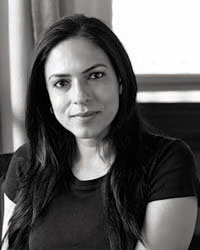 Better half of renowned designer Rajesh Pratap singh, Payal Pratap is a modern, independent woman, yet deeply rooted in tradition at the same time. A design graduate from NIFT Delhi in 1994, she worked in the industry for six years before joining her husband and assisting him.
Better half of renowned designer Rajesh Pratap singh, Payal Pratap is a modern, independent woman, yet deeply rooted in tradition at the same time. A design graduate from NIFT Delhi in 1994, she worked in the industry for six years before joining her husband and assisting him.
 Arjun Khanna presented his Indian Prince at the grand finale of Bangalore Fashion Week 2013. The collection for the 21st century Indian groom was made out using rich jamevar, original banarsi silk, jacquard and was embellished with rich pitta and zardozi work to create sherwanis, bundagalas, bundhis with signature Arjun Khanna patiyala salwars, jodhpurs and afghani pants.
Arjun Khanna presented his Indian Prince at the grand finale of Bangalore Fashion Week 2013. The collection for the 21st century Indian groom was made out using rich jamevar, original banarsi silk, jacquard and was embellished with rich pitta and zardozi work to create sherwanis, bundagalas, bundhis with signature Arjun Khanna patiyala salwars, jodhpurs and afghani pants.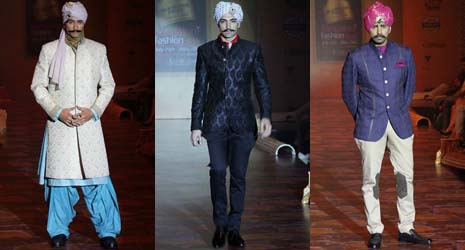

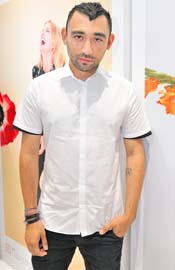 Nicola Formichetti was in Tokyo to promote the Japanese brand Uniqlo’s new range of silk and cashmere products. Working as creative fashion director with Uniqlo since 2006, the stylist intensified his role with the brand by appearing in a recent television ad for the brand in Japan.
Nicola Formichetti was in Tokyo to promote the Japanese brand Uniqlo’s new range of silk and cashmere products. Working as creative fashion director with Uniqlo since 2006, the stylist intensified his role with the brand by appearing in a recent television ad for the brand in Japan.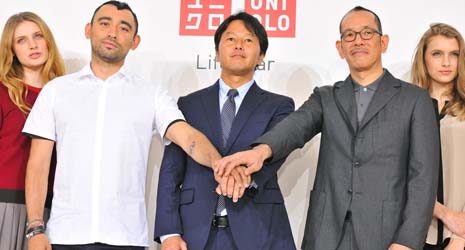

 Greek fashion designer, Sophia Kokosalaki after parting ways with Diesel is coming up with her 40-piece ready-to-wear bridal collection. Planning to showcase the collection during New York Bridal Market in October, Sophia will design one collection a year
Greek fashion designer, Sophia Kokosalaki after parting ways with Diesel is coming up with her 40-piece ready-to-wear bridal collection. Planning to showcase the collection during New York Bridal Market in October, Sophia will design one collection a year